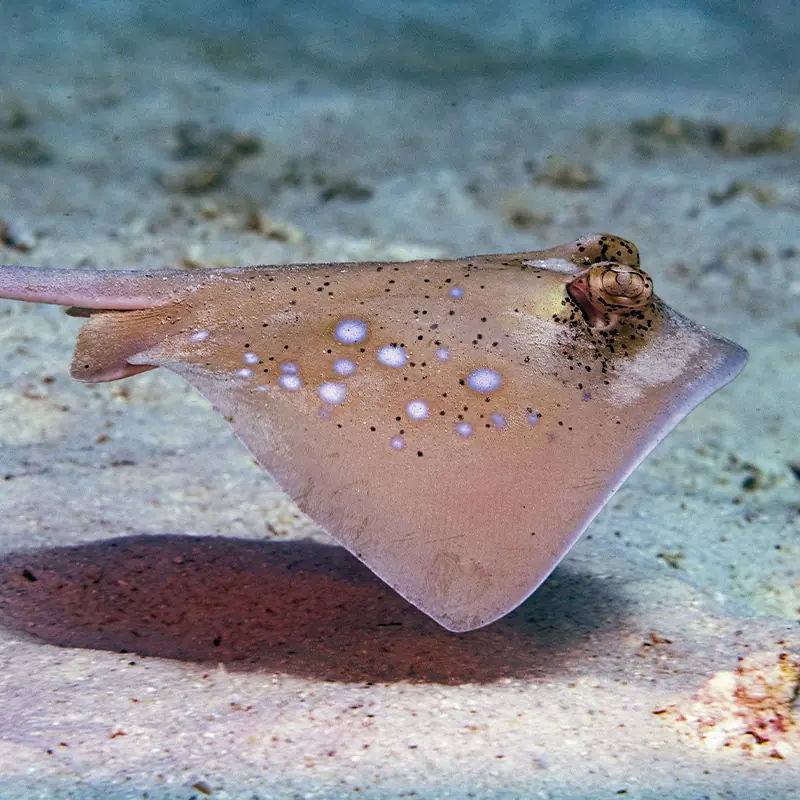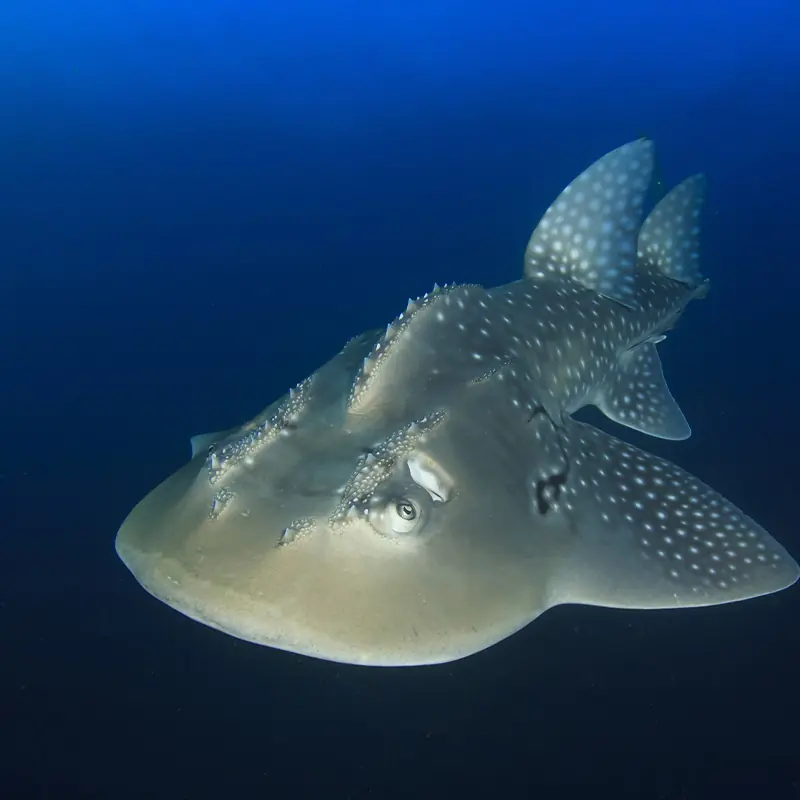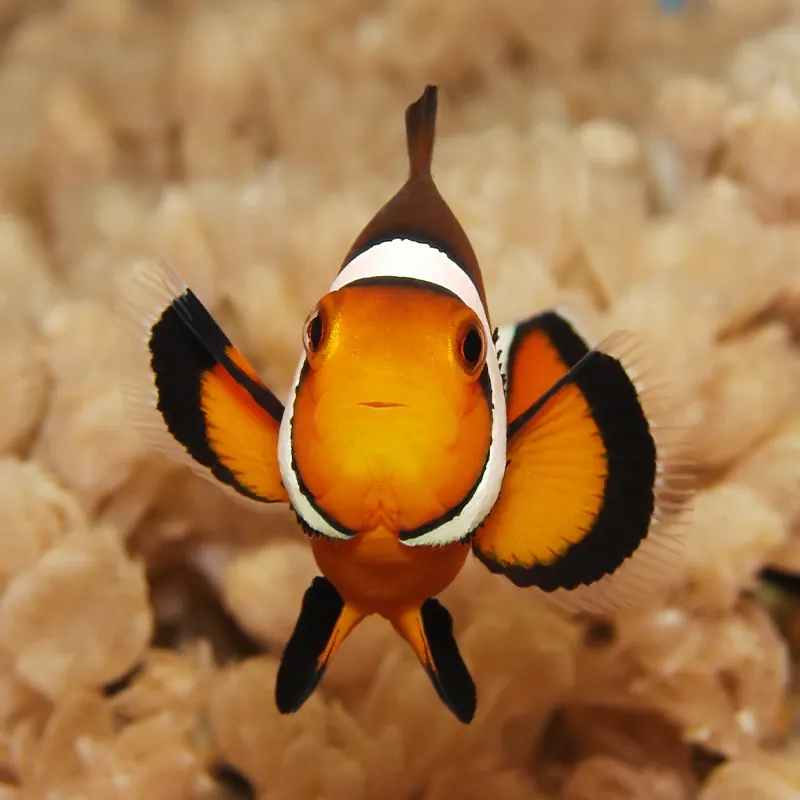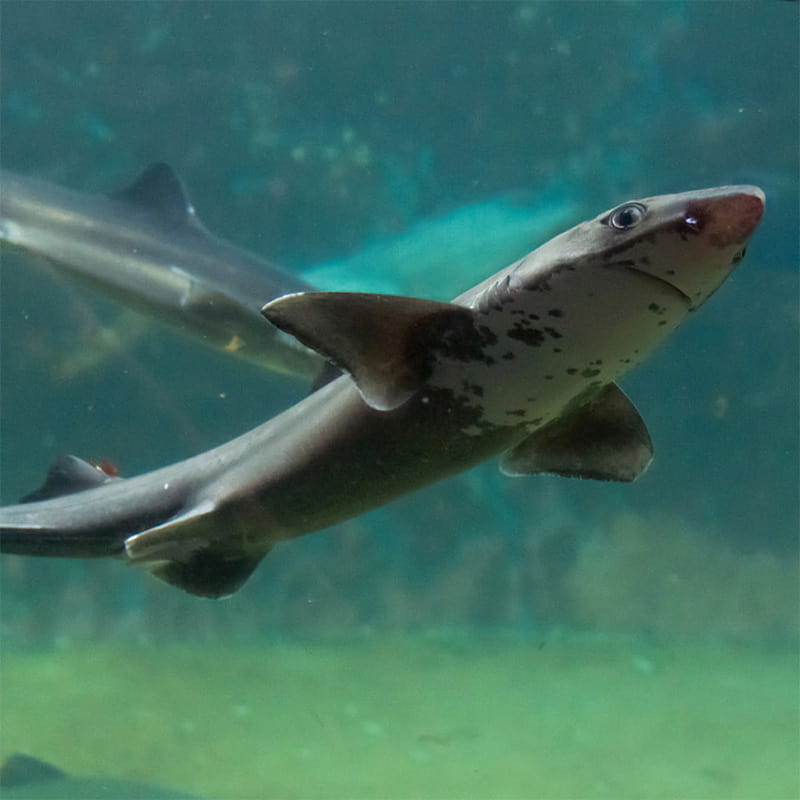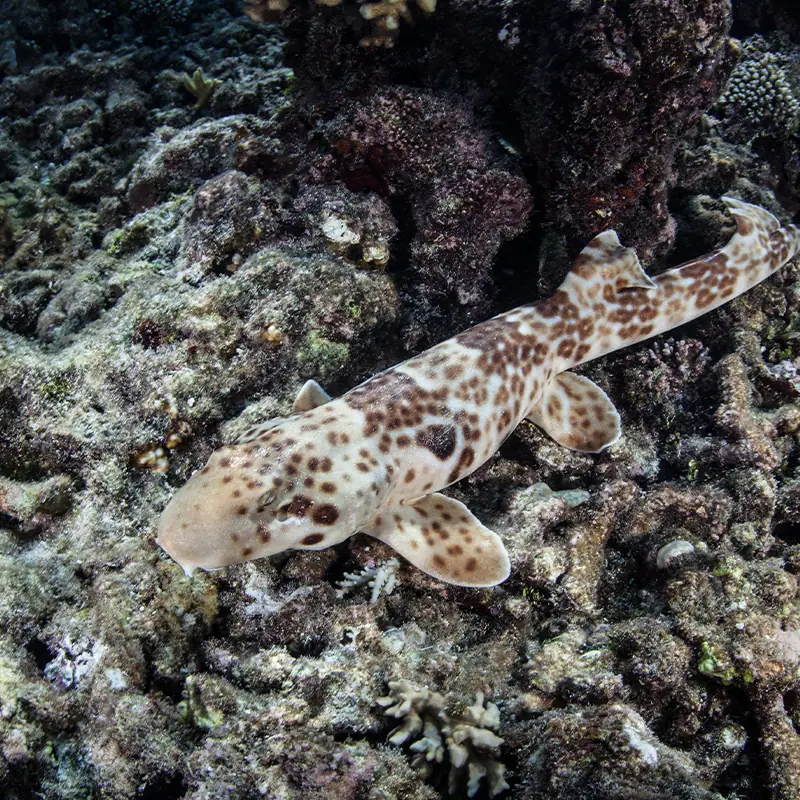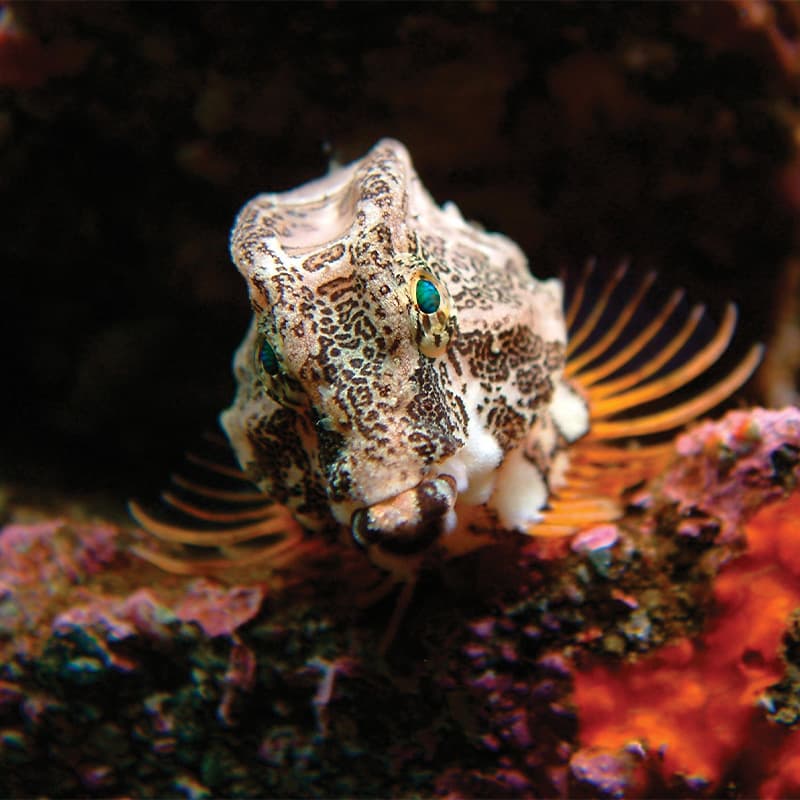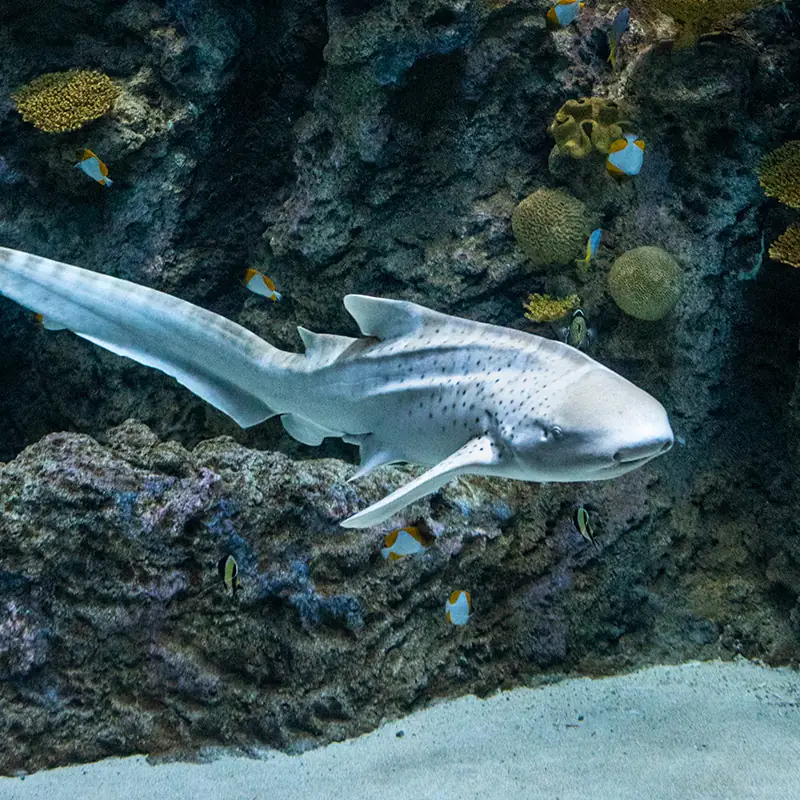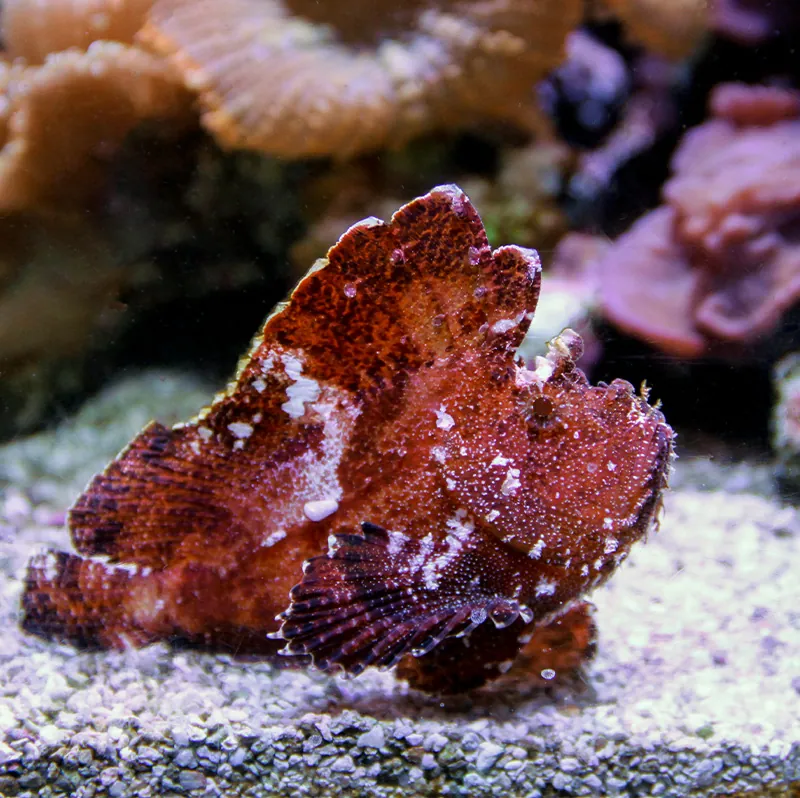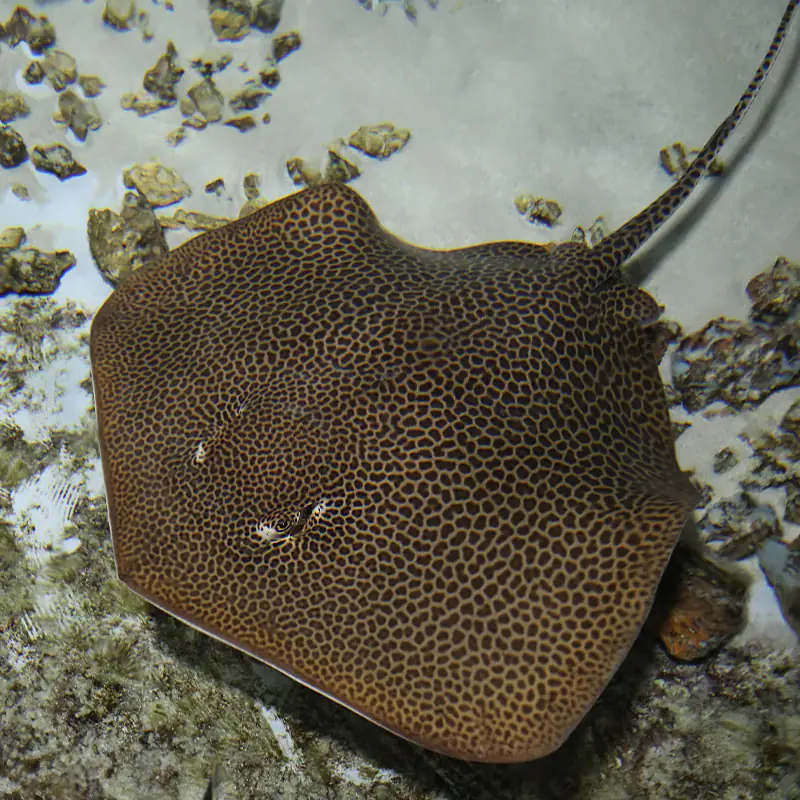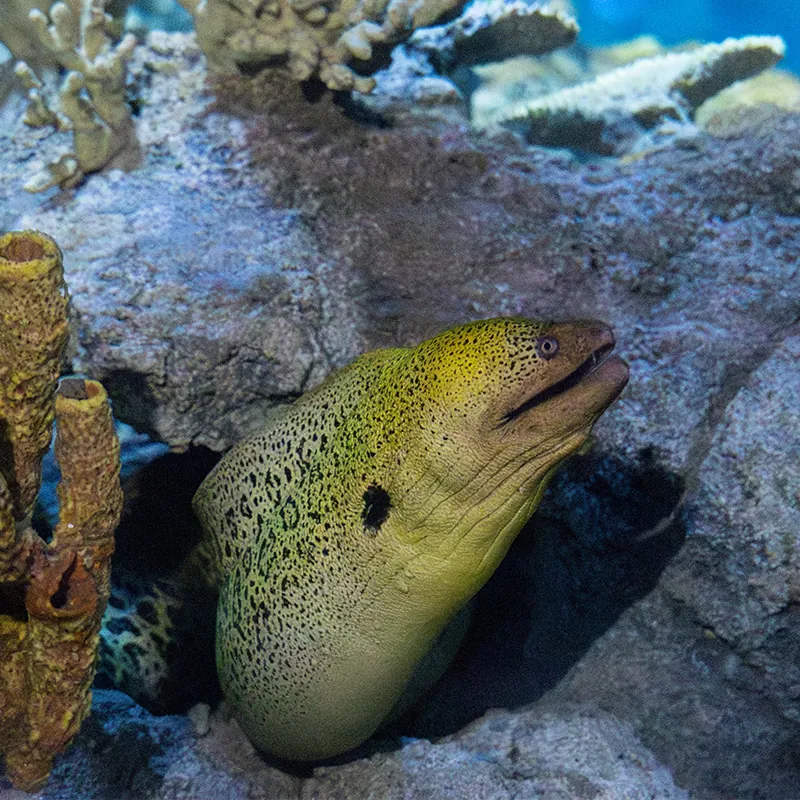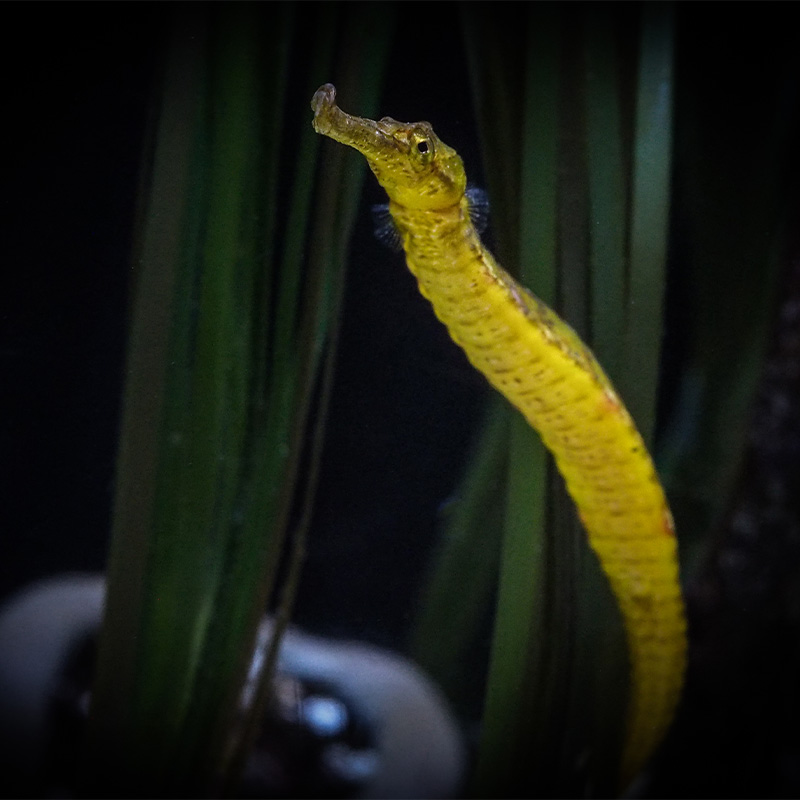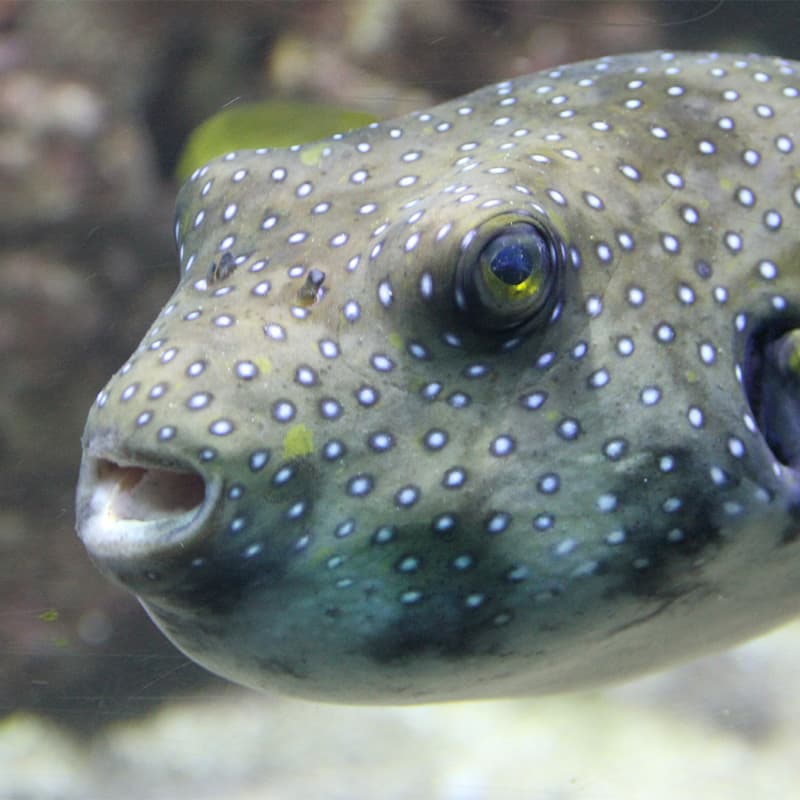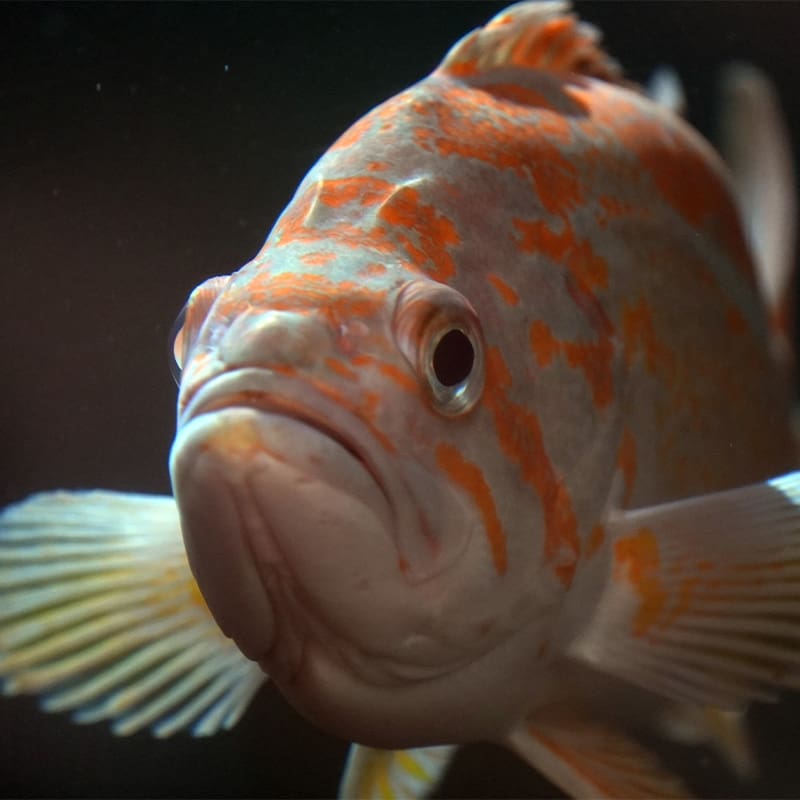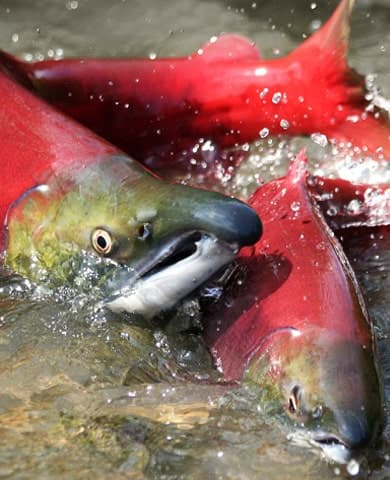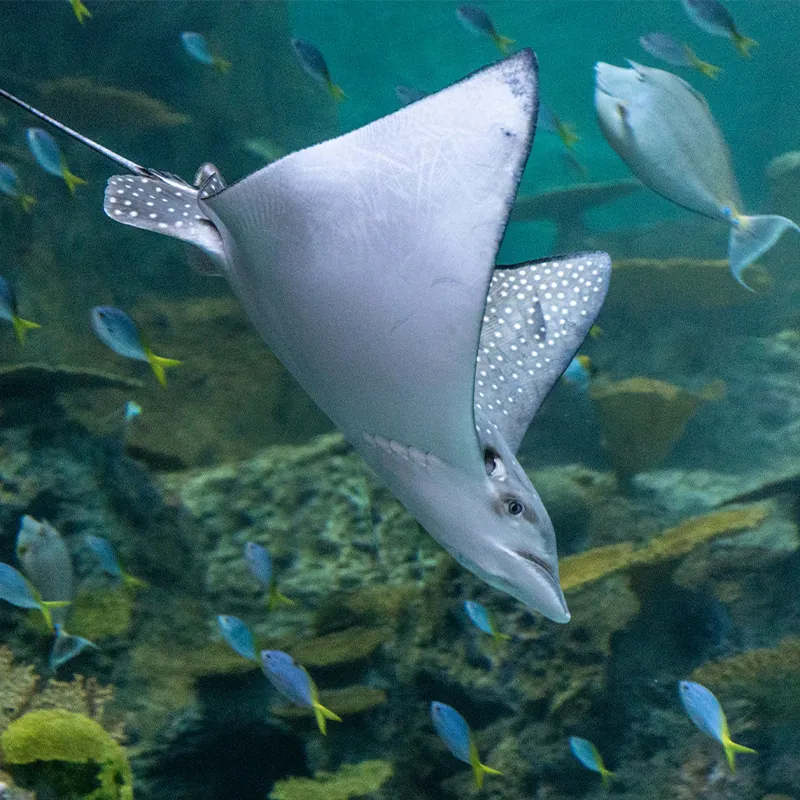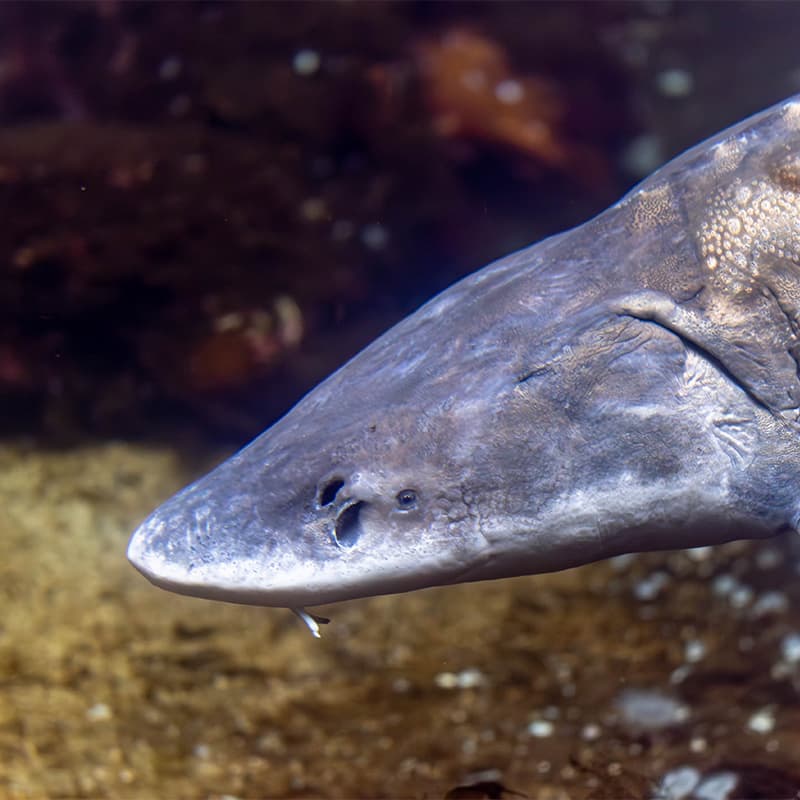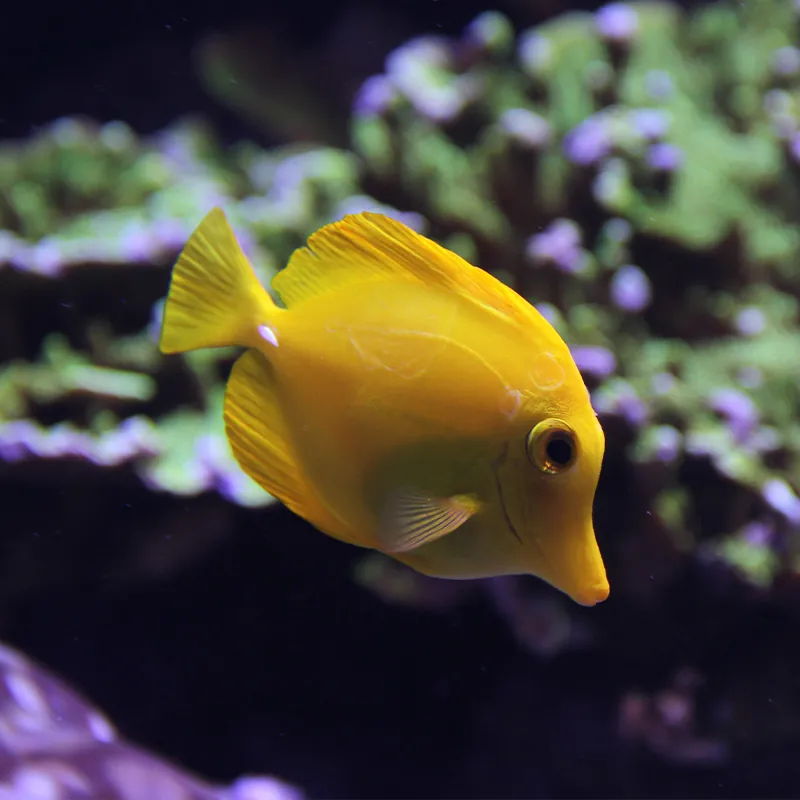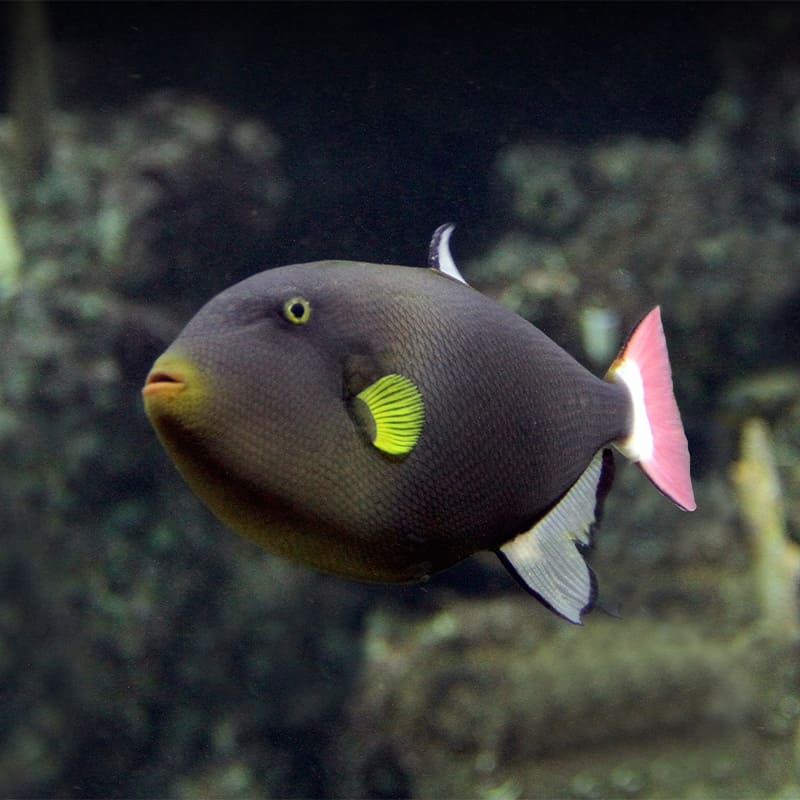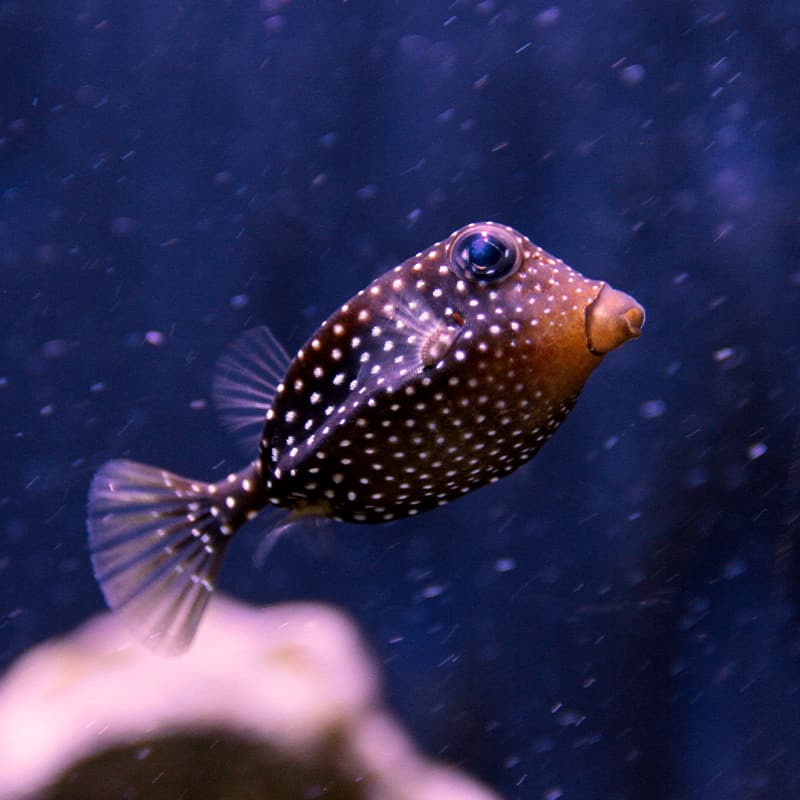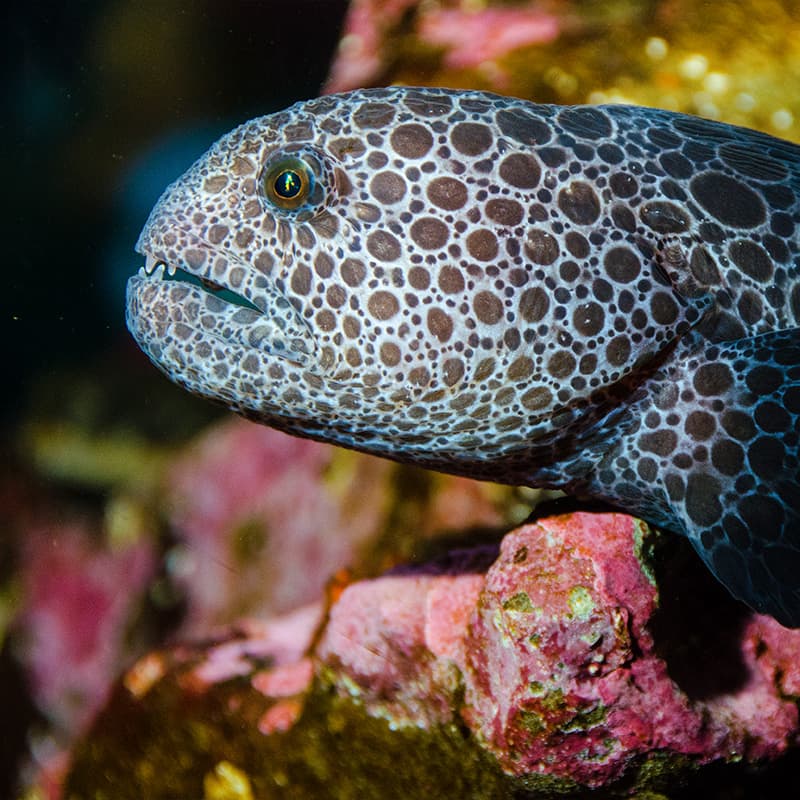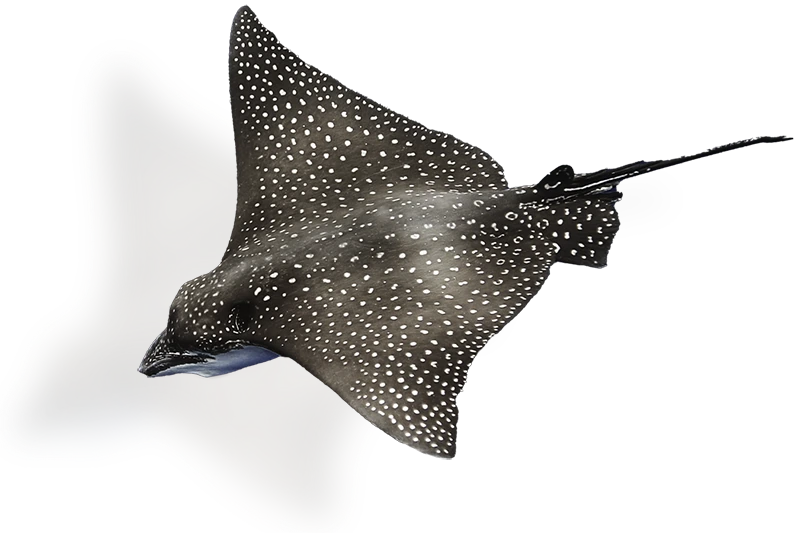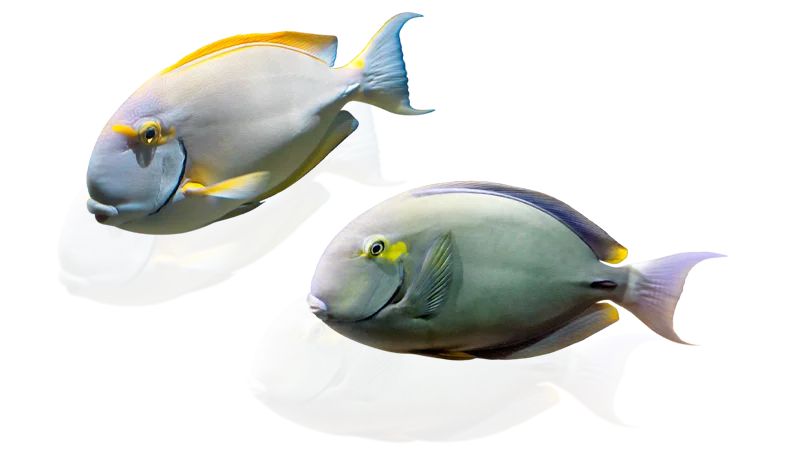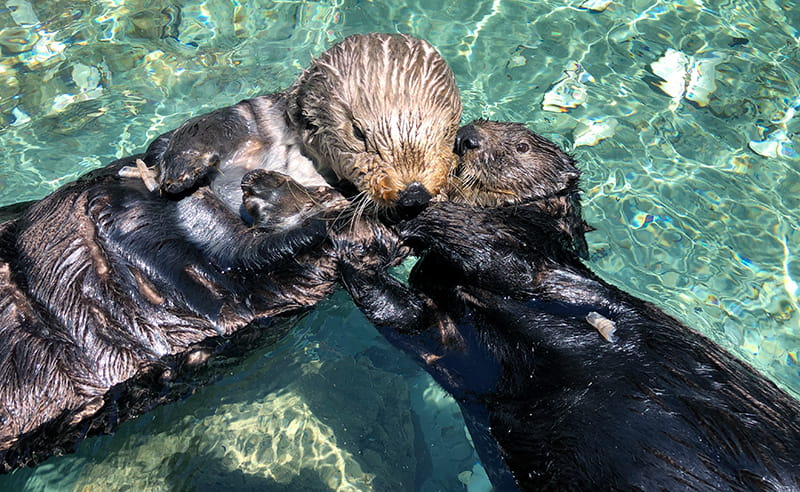- Fish
Seahorses
An ancient tale of mistaken identity
The scientific name for seahorses is hippocampus—from Greek words that mean “horse sea monster.” The hippocampus was a huge, mythological beast with the head and front legs of a full-grown horse, and a long fish tail in back.
At the Aquarium
- The Archipelago, Ocean Pavilion


Basics about a fish that’s anything but
Seahorses live around the world in temperate and tropical salt water, sheltering in seagrass beds, estuaries (where salt and fresh water meet, such as at the mouths of rivers), coral reefs and mangroves—where their camouflage helps keep them safe. There are 50 or so known seahorse species, ranging in size from less than an inch to nearly 14 inches long. Instead of scales, they have hard, bony rings. On their long-snouted heads you’ll see a tiny spike or horn; this “coronet” is unique to each species.
Always the favorite—except in a race
Unlike other fish, seahorses swim with their bodies in a vertical position. Two ear-like pectoral fins on their head steer and stabilize their movement, while their single dorsal (back) fin waves rapidly from side to side, propelling them forward. At a top speed of only five feet per hour, it’s no wonder they’re not winning any races. And also not a surprise that they don’t migrate. They tend to stay in the same territory their whole lives, wrapping their prehensile (capable of grasping) tails around coral, seaweed and marine plants to stay put in strong currents.
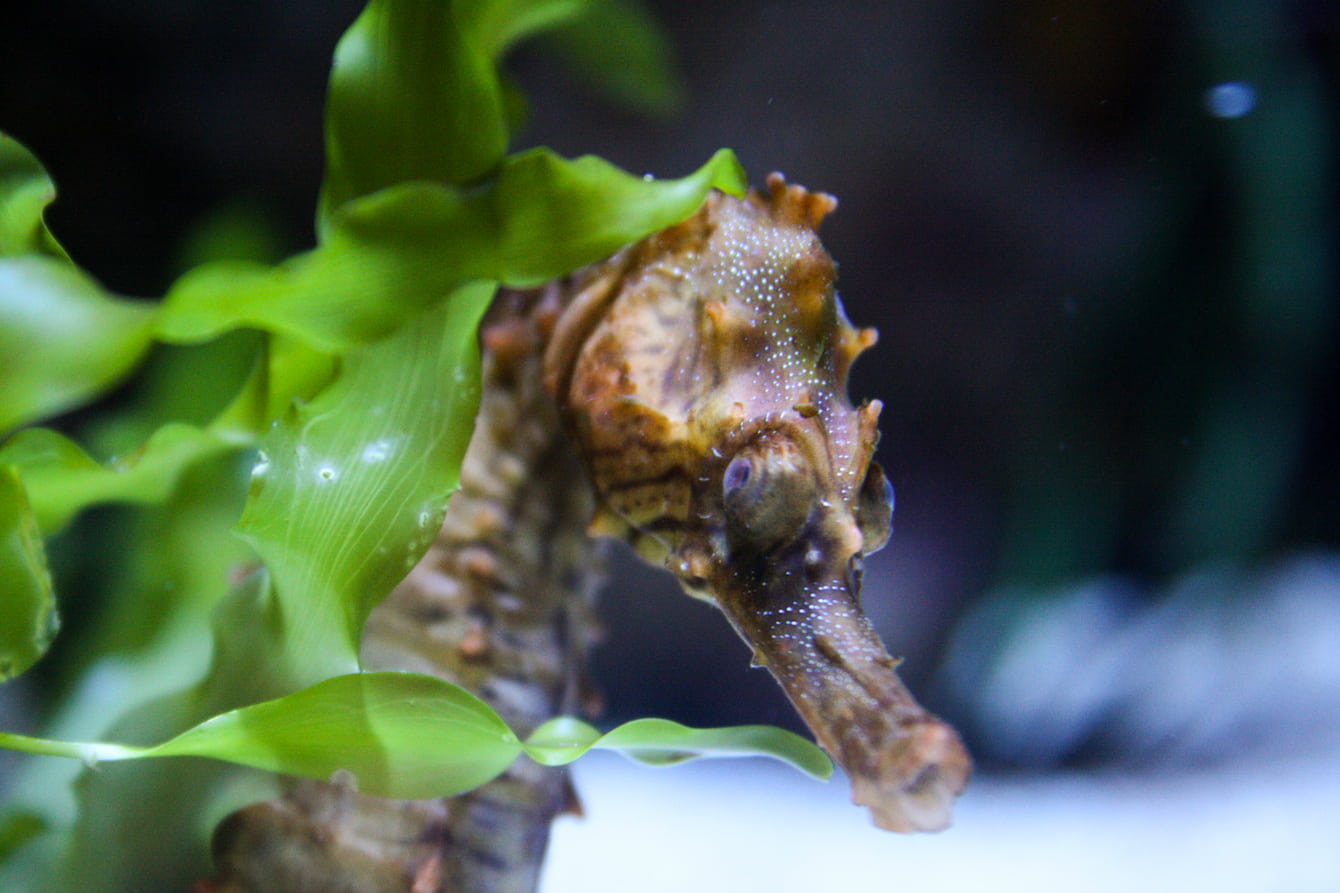
Slurping at the all-day sea buffet
Seahorses have fused, unmovable jaws and no teeth. Their mouths are long, thin tubes in their snouts. Using this handy, built-in straw, it’s easy for them to slurp plankton, tiny shrimp and other crustaceans—as long as the meal fits through the tube. Their very simple digestive systems have no stomach, so they need to eat 30 to 50 times a day just to stay alive.

Dad gestates best
Seahorses are among the few animal species in which the male is the mama for the pregnancy and birth. In an elaborate, hours-long mating "dance," the male/female pair changes color and makes clicking sounds. After the eggs—up to 2,000!—are fertilized, the female deposits them into the male's brood pouch. He incubates them and eventually gives birth to fully developed (but very tiny) hatchlings.
We can be the sea change
People remain the biggest threat to seahorses. Pollution and climate change harm them and their habitat. The International Union for Conservation of Nature (IUCN) has listed about one quarter of seahorse species as Vulnerable. The good news is that you can make a difference for seahorses—and all the living things in our one world ocean—by saving energy, choosing sustainable seafood and raising your voice for collective action on behalf of the marine environment. Visit our Act for the Ocean webpage for details!
Quick facts
Their colors and textures easily camouflage seahorses in the seagrass beds, estuaries, coral reefs and mangroves where they live.
Each species of hippocampus has a specific number of bony exoskeleton rings.
Courtship clicks coming from their coronet are the only sounds seahorses make.
